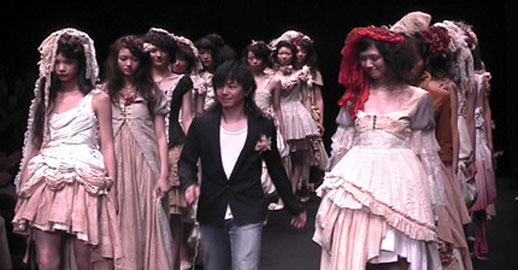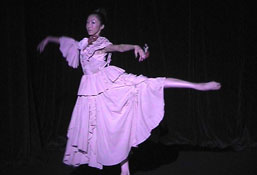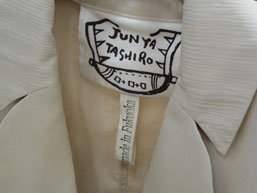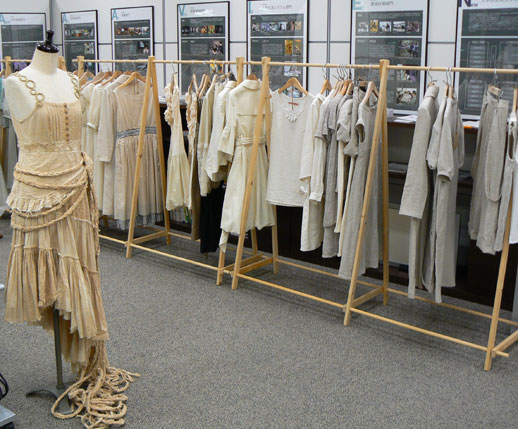Clothes that Mature like Fine Wine

Junya Tashiro was born in 1974, in Saga Prefecture, in the southern Japanese island of Kyushu. In other words, almost as far from the fashion capital of Tokyo as is geographically possible. Tashiro graduated from a design university, and worked at an apparel maker before going independent and starting his own label in 2004. He first joined Japan Fashion Week a short time later, in September, 2006, presenting his ’07 Spring/Summer creations. Tashiro remains based in Kyushu, having set up his atelier and office in Kyushu’s largest city, Fukuoka; indeed, “Made in Fukuoka” is printed on the labels of many of his clothes. Geographically, he is far removed from his fellow designers, many of whom are based in the Sendagaya district of Tokyo. Creatively, Tashiro also sets himself apart from his colleagues. While shimmering blacks and silvers, skull and crossbone motifs, and high-tech fabrics are typical of the young Tokyo designers, Tashiro works in natural fabrics, using earthy colors.


While many Tokyo-based designers present a hyper-refined look, Tashiro describes his creations as “clothes that will mature,” aging like a fine wine, but also becoming more comfortable like an old sofa or favorite sweater. “The more you wear and wash your clothes, the more they become familiar to you, and the more you feel comfortable in them,” Tashiro explains. “If apparel has a nice feel to it to begin with, after 5 years, or 10 years, you will think ‘this is better now than when I bought it.’ I want to make apparel based on the idea that good clothing doesn’t get old, but matures.” Indeed, the theme for this exhibition was “Ragxury,” a clever blending of “rag” and “luxury,” as the Japanese language does not distinguish between the pronunciation of “ra” and “lu”.
In the collection show on September 1st, also at Tokyo Midtown, Tashiro wanted to make his beliefs about comfortable clothing clear by having ballerina dance effortlessly in one of his creations, a breathtaking performance that wowed the audience.

The centerpiece of this exhibition was an example of Tashiro’s concept of “Ragxury,” a dress made of various scraps leftover from the making of other dresses, resulting in many layers of different textures. This was then dyed overnight…in tea! The various materials absorbed the tea in different ways, leading to an organic color scheme. Many visitors to the exhibition also stopped to look at a teddy bear that seems to represent Tashiro’s design philosophy—cute, but with a slightly rough hand-made feel.
During this fashion exhibition, Design Hub was also holding the “Asian Digital Art Award” exhibition, proving that this new venue will continue to offer an exciting variety of exhibitions.
Kevin Mcgue
Kevin Mcgue



